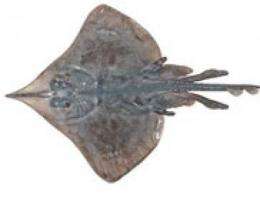Climate change hits southeast Australia fish species

Scientists are reporting significant changes in the distribution of coastal fish species in south-east Australia which they say are partly due to climate change.
CSIRO's Climate Adaptation and Wealth from Oceans Flagships have identified 43 species, representing about 30 per cent of the inshore fish families occurring in the region, that exhibited shifts thought to be climate-related.
These include warm temperate surf-zone species such as Silver Drummer and Rock Blackfish that are breeding and have become more abundant, and range increases in Snapper and Rock Flathead. There is also a greater abundance of warm water tunas and billfishes and occasional visits from Queensland Groper and Tiger Sharks.
"Furthermore, up to 19 species, or 5 per cent, of Tasmanian coastal fish fauna have undergone serious declines or are possibly extinct locally," says the Curator of the Australian National Fish Collection, Dr Peter Last. "At the same time many warm temperate species have moved in and colonised the cool temperate Tasmanian region.
"Shifts in the distribution of marine animals in response to climate change can be detrimental to some species. The problem is that in southern Tasmania, shallow cold water species have nowhere to escape warmer conditions in the sea," Dr Last says.
Particularly at risk are species such as the Maugean Skate, which is now confined to Port Davey and Macquarie Harbour in Tasmania's southwest.
Dr Last and his colleagues from CSIRO and the Tasmanian Aquaculture and Fisheries Institute outline the changes in a research paper published in the journal Global Ecology and Biogeography.
Their data come from a range of sources - published accounts, scientific surveys, spearfishing and angling competitions, commercial catches and underwater photographic records - from the late 1800s to the present. The findings support information provided in Australia's first Marine Climate Change Impacts Report Card, released in 2009, which describes recorded and projected changes to marine species from shifts in climate.
Dr Last says south-eastern Australia is a climate change hotspot with well-documented changes already occurring over the past 70 years, including; southward penetration of the East Australian Current by about 350 kilometres and a temperature rise of almost 2ºC.
"Increased water temperatures in the Tasman Sea are likely to have a cascading effect through local marine ecosystems and, for example, the Bass Strait islands act as stepping stones or distributional pathways south. Already we are seeing biological responses to these changes in the increased presence of sea urchins and fishes from further north."
Provided by CSIRO

















